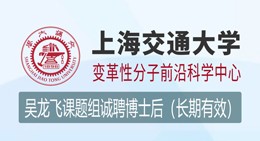样式: 排序: IF: - GO 导出 标记为已读
-
Optimal planning of urban air mobility systems accounting for ground access trips International Journal of Sustainable Transportation (IF 3.963) Pub Date : 2024-03-01 Heeseung Shon, Sanggyu Kim, Jinwoo Lee
The concept of Urban Air Mobility (UAM), an on-demand aviation service using air vehicles for urban short-distance trips, such as electric vertical takeoff and landing aircraft (eVTOL), has recentl...
-
Retaining the transportation benefits of COVID-19 induced work from home: Understanding the role of worker productivity International Journal of Sustainable Transportation (IF 3.963) Pub Date : 2024-02-17 Natalia Barbour, Mohamed Abdel-Aty, Fred Mannering
The abrupt switch to work from home during the COVID-19 pandemic has not only altered people’s commutes but also changed their entire work-life balance. While some workers were quick to adapt and m...
-
Explainable artificial intelligence for decarbonization: Alternative fuel vehicle adoption in disadvantaged communities International Journal of Sustainable Transportation (IF 3.963) Pub Date : 2024-02-07 A. Latif Patwary, Asad J. Khattak
This article explores the adoption of alternative fuel vehicles (AFVs), leading to decarbonization, in disadvantaged communities (DACs) by applying statistical and explainable artificial intelligen...
-
Everyday accessibility practices and experiences in a context of transitions to sustainable mobility: Qualitative evidence from Sub-Saharan Africa International Journal of Sustainable Transportation (IF 3.963) Pub Date : 2024-02-07 Daniel Oviedo, Clemence Cavoli, Yasmina Yusuf, Braima Koroma, Alexandria Z. W. Chong
Addressing the need for curbing private motorization and car dependency while reducing inequalities associated with transport requires an in-depth understanding of the individual and collective pra...
-
Association between network characteristics and bicycle ridership across a large metropolitan region International Journal of Sustainable Transportation (IF 3.963) Pub Date : 2024-02-06 Ben Beck, Chris Pettit, Meghan Winters, Trisalyn Nelson, Hai L. Vu, Kerry Nice, Sachith Seneviratne, Meead Saberi
Numerous studies have explored associations between bicycle network characteristics and bicycle ridership. However, the majority of these studies have been conducted in inner metropolitan regions a...
-
Tourism, transport energy consumption, and the carbon dioxide emission nexus for the USA: Evidence from wavelet coherence and spectral causality approaches International Journal of Sustainable Transportation (IF 3.963) Pub Date : 2024-01-31 Sadam Hussain, Assad Ullah, Nazakat Ullah Khan, Aamir Aijaz Syed, Heesup Han
The aim of this study is to analyze the dynamic relationship between tourism, transport energy consumption, and carbon dioxide emissions in the United States from the 1st quarter of 1995 to the 4th...
-
Correction International Journal of Sustainable Transportation (IF 3.963) Pub Date : 2024-01-31
Published in International Journal of Sustainable Transportation (Vol. 18, No. 2, 2024)
-
Perceived importance of context-specific built-environment factors of walking: A new perspective for prioritizing policy measures for promoting walking International Journal of Sustainable Transportation (IF 3.963) Pub Date : 2024-01-19 Caroline Koszowski, Rico Wittwer, Stefan Hubrich, Regine Gerike
Walking as one type of physical activity generates benefits for personal health and contributes to sustainability in its environmental, economic, and social dimensions. Based on a cross-sectional s...
-
Exploring the impacts of built environment on bike-sharing trips on weekends: The case of Guangzhou International Journal of Sustainable Transportation (IF 3.963) Pub Date : 2024-01-11 Guiyu Chen, Zongcai Wei
Shared mobility has brought many disruptive changes to urban transportation systems all over the world. Shared bikes have proven to be among the most successful and influential travel tools in atte...
-
Operational-based decarbonization of container ports: The case of Ningbo-Zhoushan Port International Journal of Sustainable Transportation (IF 3.963) Pub Date : 2024-01-08 Collins I. Ezeh, Ulf H. Richter, Juergen H. Seufert, Chuansheng Peng
In recent years, the shipping industry has witnessed significant growth in its operations and is considered to be one of the fastest-growing sectors regarding energy consumption and carbon dioxide ...
-
Taking steps toward healthy & sustainable transport investment: A systematic review of economic evaluations in the academic literature on large-scale active transport infrastructure International Journal of Sustainable Transportation (IF 3.963) Pub Date : 2024-01-03 Madison Bland, Matthew I. Burke, Kelly Bertolaccini
For cities seeking to promote active transport, overcoming the institutional practices of car-centric planning and investment is critical to redistributing funds toward dedicated walking and cyclin...
-
Factors influencing bikeshare service and usage in a rural college town: A case study of Montgomery County, VA International Journal of Sustainable Transportation (IF 3.963) Pub Date : 2024-01-03 Cat Woodson, Huthaifa I. Ashqar, Mohammed Almannaa, Mohammed Elhenawy, Ralph Buehler
While much of the bikeshare boom has centered around larger cities, smaller, lower-density, and even some rural communities have also implemented bikeshare systems successfully. Using a bikeshare d...
-
Investigating the impacts of E-scooters on a bike-sharing system in Tucson, Arizona with a no ride zone International Journal of Sustainable Transportation (IF 3.963) Pub Date : 2023-12-09 Adrian Cottam, Xiaofeng Li, Mohammad Razaur Rahman Shaon, Yao-Jan Wu
E-scooters have exploded in popularity across the United States in recent years. Understanding the effects of shared micromobility on society, as well as understanding how one shared micromobility ...
-
Patterns of car dependency of metropolitan areas worldwide: Learning from the outliers International Journal of Sustainable Transportation (IF 3.963) Pub Date : 2023-12-04 Pedram Saeidizand, Kobe Boussauw
Despite the development of alternative modes of urban transport, the private car is still the most popular transport option in many regions around the world. Various spatial and socio-economic char...
-
Delivering Transit Oriented Development (TOD) in low to medium density contexts. Actor relationships and market conditions in smaller Swedish cities International Journal of Sustainable Transportation (IF 3.963) Pub Date : 2023-11-25 Robert Hrelja, Tom Rye
This article analyses actor relationships in Transit Oriented Development (TOD) planning in order to better understand the preconditions necessary for planning processes to result in TOD in lower d...
-
Exploring why girls don’t cycle to school: Student and parent/guardian focus group findings on barriers to cycling International Journal of Sustainable Transportation (IF 3.963) Pub Date : 2023-11-14 Ross Higgins, Aoife Ahern
Increasing active travel by 2030 is one of Ireland’s important objectives in achieving its 2030 emissions reduction targets. Therefore, encouraging cycling at a young age is important. Irish Census...
-
Low emission scenarios with shared and electric cars: Analyzing life cycle emissions, biofuel use, battery utilization, and fleet development International Journal of Sustainable Transportation (IF 3.963) Pub Date : 2023-09-15 Hampus Berg Mårtensson, Mattias Höjer, Jonas Åkerman
Passenger cars contribute considerably to total emissions of greenhouse gasses. In this article, we develop scenarios for the Swedish passenger car fleet in 2030, achieving a 70% reduction of green...
-
Does dockless bike-share influence transit use? Evidence from the Sacramento region International Journal of Sustainable Transportation (IF 3.963) Pub Date : 2023-09-04 Hossain Mohiuddin, Tatsuya Fukushige, Dillon T. Fitch-Polse, Susan L. Handy
Whether micromobility is hurting or boosting transit ridership remains a matter of debate. Previous studies on this topic mainly use either individual level data or system level data. This paper pr...
-
The impact of covid-19 pandemic on trail usage: Application of a ten-year trail counting methodology International Journal of Sustainable Transportation (IF 3.963) Pub Date : 2023-09-04 Michelle Renee Oswald Beiler
The COVID-19 pandemic has impacted non-motorized mobility in the U.S. since March 2020. Many trail facilities have served as a venue for both recreational and commuting options for pedestrians and ...
-
The contrasted evolution of cycling during youth. Determinants of bicycle ownership and use International Journal of Sustainable Transportation (IF 3.963) Pub Date : 2023-06-16 Aurélie Schmassmann, Daniel Baehler, Patrick Rérat
Cycling during youth is characterized in many countries by two trends: its decline over the course of several decades (termed the generation effect) and its decline over the life course of individu...
-
Hybrid electric vehicle data-driven insights on hot-stabilized exhaust emissions and driving volatility International Journal of Sustainable Transportation (IF 3.963) Pub Date : 2023-06-12 Paulo Fernandes, Eloisa Macedo, Ricardo Tomás, Margarida C. Coelho
Despite the fuel use and emission benefits of hybrid electric vehicles (HEVs), few studies have characterized in detail emission patterns and driving volatility profiles from HEVs in different road...
-
First and last mile travel mode choice: A systematic review of the empirical literature International Journal of Sustainable Transportation (IF 3.963) Pub Date : 2023-06-03 Ying Lu, Anthony Kimpton, Carlo G. Prato, Neil Sipe, Jonathan Corcoran
The first and last mile (FLM) problem is the lack of adequate connectivity between transit stations and trip origins/destinations. Consequently, this problem increases the probability of driving pr...
-
A strategic analysis model of residents’ travel demand for Shanghai 2035 under new technology International Journal of Sustainable Transportation (IF 3.963) Pub Date : 2023-05-12 Xuenuo Zhang, Chao Yang, Quan Yuan
Abstract Mobility is a vast and comprehensive system where many new multimodal technology revolutions occur. To make strategies of sustainable development, policy makers particularly focus on the residents’ trip scenarios in the long-term future affected by policies but not the extreme accuracy of the predictions. In this paper, we construct a strategic and integrated model of residents’ travel demand
-
Segmenting the target audience for transportation demand management programs: An investigation between mode shift and individual characteristics International Journal of Sustainable Transportation (IF 3.963) Pub Date : 2023-04-27 Meiyu (Melrose) Pan, Alyssa Ryan
Understanding the characteristics of travelers and situations that are more likely to switch from single occupancy vehicles (SOV) to more sustainable mobility options can help transportation agenci...
-
Assessing the potential of cycling growth in Toronto, Canada International Journal of Sustainable Transportation (IF 3.963) Pub Date : 2023-04-21 Alexander Tabascio, Ignacio Tiznado-Aitken, Darnel Harris, Steven Farber
Abstract Cycling is seen as a desirable modal choice due to the environmental, economic and social benefits to individuals and cities. While North American cities have expanded their targeted infrastructure and programs, cycling still is a marginal mode compared to modal shares observed in western Europe. In an effort to promote a more sustainable transport future, the City of Toronto has highlighted
-
Economic impacts of the catenary electric road system implementation in Flanders International Journal of Sustainable Transportation (IF 3.963) Pub Date : 2023-04-21 Raimonds Aronietis, Thierry Vanelslander
Catenary electric road system (ERS) is a technology that enables powering pantograph-equipped road freight vehicles with electricity from overhead catenary while in motorway traffic to provide ener...
-
Traffic congestion and air pollution: Empirical evidence before/after COVID-19 in Seoul, Korea International Journal of Sustainable Transportation (IF 3.963) Pub Date : 2023-03-30 Jungkyu Jin, Jangik Jin
Severe traffic congestion leads to toxic levels of air pollution. We attempt to explore how traffic congestion affects air pollution, especially PM10 and PM2.5, by focusing on the city of Seoul, Ko...
-
The perfect match? Assessment of excess commute and transport externalities using an agent-based transport model International Journal of Sustainable Transportation (IF 3.963) Pub Date : 2023-03-06 Nico Kuehnel, Qin Zhang, Corin Staves, Rolf Moeckel
Abstract Excess commute (EC) refers to the sub-optimal allocation of workers to jobs in an urban region in terms of minimal commute distances. This article investigated EC for the Munich metropolitan area using a microscopic agent-based modeling suite. We first considered the optimization strategy, comparing the traditional zone-based transportation problem to a microscopic routine. Zone-based optimization
-
The reciprocal effects of physical activities and ride-sourcing on health International Journal of Sustainable Transportation (IF 3.963) Pub Date : 2023-03-06 Achmad Wicaksono, Dimas B. E. Dharmowijoyo, Liza E. Tanjung, Yusak O. Susilo
Previous studies revealed that not all physical activities contribute to positive health results. Due to time limitations and energy deficits, involvement in physical activity might limit participa...
-
Modeling emission reduction benefits of the premium point-to-point bus service in Metropolitan Manila, Philippines – a scenario analysis International Journal of Sustainable Transportation (IF 3.963) Pub Date : 2023-02-28 Jose C. Cua, Li Wan
Abstract Road transport has been one of the largest contributors to global carbon emissions. In the Philippines, one such measure is the introduction of a relatively new public transport mode called the “Premium Point-to-Point (P2P) Bus Service”, which features shorter travel time and lower emission intensity than conventional buses. In light of the significant deficiency in transport emission studies
-
Can shared micromobility replace auto travel? Evidence from the U.S. urbanized areas between 2012 and 2019 International Journal of Sustainable Transportation (IF 3.963) Pub Date : 2023-02-25 Kwangyul Choi, Han J. Park, Greg P. Griffin
Abstract Previous literature has shown mixed findings on whether bike or e-scooter share programs, collectively called shared micromobility, play a role in reducing vehicle travel. In this study, we focused on two types of shared micromobility (i.e., bikes—both regular and e-bikes—and e-scooters). We examined their impact on vehicle travel in urbanized areas in the United States between 2012 and 2019
-
Identifying vehicles as green cars using Q methodology: Viewpoints of Korean transport policy experts International Journal of Sustainable Transportation (IF 3.963) Pub Date : 2023-02-10 Youhyun Lee, Minju Park
The recent trend of transitioning from cars with internal combustion engines to green cars has accelerated amidst growing concerns of a climate crisis and the COVID-19 pandemic. South Korea is a pa...
-
A shift to green cybersecurity sustainability development: Using triple bottom-line sustainability assessment in Qatar transportation sector International Journal of Sustainable Transportation (IF 3.963) Pub Date : 2023-02-01 Khalifa AL-Dosari, Noora Fetais, Murat Kucukvar
Green cybersecurity is the emerging trend in the new era and this green cybersecurity technology minimizes the negative effects of IT operations and implements a green sustainable environment. Ther...
-
What determines modal substitution between bike-sharing and public transit? Evidence from Columbus, Ohio during the COVID-19 pandemic International Journal of Sustainable Transportation (IF 3.963) Pub Date : 2023-01-25 Kihyun Kwon, Gulsah Akar
This study explores the relationship between bike-sharing and public transit trips before and after COVID-19 lockdowns, focusing on Columbus, Ohio. Using CoGo Bike Share trip data together with Aut...
-
Evaluating the need for secured bicycle parking across cyclist typologies International Journal of Sustainable Transportation (IF 3.963) Pub Date : 2023-01-16 Juliette Fournier, Mathilde Van Liefferinge, Léa Ravensbergen, James DeWeese, Ahmed El-Geneidy
Abstract Concerns about bicycle theft can act as a barrier to cycling uptake. A promising solution to prevent theft is secured bicycle parking, which offers more protection than regular on-street bicycle racks through secured access, or the presence of an attendant. As cities begin to invest in this infrastructure, practitioners must make difficult decisions about which types of facilities to install
-
Sustainability evaluation methods for public transport with a focus on Latin American cities: A literature review International Journal of Sustainable Transportation (IF 3.963) Pub Date : 2023-01-12 Alexandra Velasco Arevalo, Regine Gerike
Stakeholders worldwide commit to the goal of sustainable development and transport, and to the promotion of public transport (PT) as one backbone of sustainable transport. Evaluation frameworks hav...
-
Optimal selection of vehicle types for an electric bus route with shifting departure times International Journal of Sustainable Transportation (IF 3.963) Pub Date : 2023-01-04 Chunyan Tang, Ying-En Ge, He Xue, Avishai (Avi) Ceder, Xiaokun Wang
Transition to electrified transit vehicles has attracted a great public attention to achieve a greener public transport service. This work develops a methodology for multi-type electric buses (EBs)...
-
The impact of public bike-sharing systems on mobility patterns: Generating or replacing trips? International Journal of Sustainable Transportation (IF 3.963) Pub Date : 2023-01-02 Filipe Moura, Gabriel Valença, Rosa Félix, David S. Vale
Bike-sharing systems allow occasional and regular users to travel by replacing other transport modes for the same trip or generating a new journey. Our research assesses the demand for Lisbon’s pub...
-
Governing beyond innovation: Exploring the impact of connected and automated vehicles on the organization of vehicle accident investigations International Journal of Sustainable Transportation (IF 3.963) Pub Date : 2022-12-29 Hiroki Ito, Johannes Kester
Connected and automated vehicles (CAVs) bring new risks and safety benefits to future road transport. This paper explores the impacts and consequences of CAVs on the organizational, governance and ...
-
Does bike sharing improve public health? A case study in New York City International Journal of Sustainable Transportation (IF 3.963) Pub Date : 2022-12-28 Zenghao Hou, Kanglong Wu, H. Michael Zhang
Bike sharing contributes to public health by providing physical exercise opportunities. Meanwhile, the shift of vehicular travel demand to bike sharing may cut vehicular emissions and severe crashe...
-
Impacts of transit-oriented development on car use over a 10-year period in Porto, Portugal: From macro- to micro-analysis International Journal of Sustainable Transportation (IF 3.963) Pub Date : 2022-12-28 Anna Ibraeva, Gonçalo Homem de Almeida Correia, Cecília Silva, António Pais Antunes
Transit-oriented development (TOD), an urban planning concept that aims to promote sustainable transport modes, has been actively studied in recent years, especially in relation to car trips reduct...
-
Infrastructure planning for ride-hailing services using shared autonomous electric vehicles International Journal of Sustainable Transportation (IF 3.963) Pub Date : 2022-12-22 Diwas Paudel, Tapas K. Das
Abstract Ride-hailing services using shared autonomous electric vehicles (SAEVs) are soon expected to serve a significant portion of the public transportation demands, especially in metropolitan cities. The transportation demands will arise randomly across all transportation nodes and during all hours of operation. This spatio-temporal nature of the transportation demand together with the constraints
-
Real-world charging behavior and preferences of electric vehicles users in Germany International Journal of Sustainable Transportation (IF 3.963) Pub Date : 2022-12-22 John E. Anderson, Moritz Bergfeld, Do Minh Nguyen, Felix Steck
Abstract As energy consumption and greenhouse gas emissions in the transport sector have increased continuously in recent years, electric vehicles have become a potential solution to achieve environmental goals in this sector. The uptake of electric vehicle is strongly dependent on sufficient charging infrastructure. While much research has been conducted on electric vehicle charging simulations and
-
Walking through a pandemic: How did utilitarian walking change during COVID-19? International Journal of Sustainable Transportation (IF 3.963) Pub Date : 2022-12-15 Xavier Delclòs-Alió, Aaron Gutiérrez, Josep Tomàs-Porres, Guillem Vich, Daniel Miravet
Walking for transportation has well-known environmental, social, and health-related benefits. However, its daily use may have been especially altered by restrictions to population activities and mo...
-
Weather conditions as cross-sectional moderators of the associations between the physical environment and walking behavior in the Netherlands International Journal of Sustainable Transportation (IF 3.963) Pub Date : 2022-12-10 Jie Gao, Donggen Wang, Dick Ettema, Marco Helbich
There is increasing evidence that people’s walking behavior is linked to the physical environment to which they are exposed. However, whether this association is moderated through local weather con...
-
Powering the transition: Public charging stations and electric vehicle adoption in Montreal, Canada International Journal of Sustainable Transportation (IF 3.963) Pub Date : 2022-12-09 Penelope Renaud-Blondeau, Genevieve Boisjoly, Hanane Dagdougui, Sylvia Y. He
With an increasing interest for electric vehicles (EV) and the associated charging needs, understanding how public charging infrastructure networks impact the adoption of such vehicles is central f...
-
Who are those fast cyclists? An analysis of speed pedelec users in the Netherlands International Journal of Sustainable Transportation (IF 3.963) Pub Date : 2022-12-08 Maud van der Salm, Zheyan Chen, Dea van Lierop
Abstract In many regions, conventional bicycles and electrically assisted bicycles (e-bikes), are gaining popularity and becoming a commonly used sustainable mode in the urban transportation system. Speed pedelecs are a type of high-speed e-bike with motorized pedal assistance up to a maximum speed of 45 km/h. This relatively new mode is most often used for trips that range from 10 to 40 kilometers
-
Analysis of factors influencing cycling count: A micro-level study using road segment count data in London International Journal of Sustainable Transportation (IF 3.963) Pub Date : 2022-12-07 Huitao Lv, Haojie Li, N. N. Sze, Ziqian Zhang, Gang Ren, Yingheng Zhang
Cycling has gained increasing popularity worldwide as a healthy and sustainable mode of travel. This study aims to investigate the factors affecting the cycle count at the road segment level based ...
-
Micromobility services before and after a global pandemic: impact on spatio-temporal travel patterns International Journal of Sustainable Transportation (IF 3.963) Pub Date : 2022-11-18 Daniela Arias-Molinares, Juan Carlos García-Palomares, Javier Gutiérrez
Abstract Sudden changes in urban mobility were caused due to the COVID-19 pandemic. The impacts are yet to be furtherly measured and analyzed. Our article uses GPS records provided by three different micromobility operators in Madrid to study how the pandemic affected their service usage and its relationships with land use. Thus, spatio-temporal travel patterns are compared between pre-COVID 19 (from
-
Understanding preferences for bicycling and bicycle infrastructure International Journal of Sustainable Transportation (IF 3.963) Pub Date : 2022-11-11 Robert B. Noland, Maria Luz Laham, Sicheng Wang
Abstract Using survey data collected in New Jersey, we analyze the frequency of bicycling and respondent perceptions of the safety of various bicycling facilities. Data was collected via a mixed-mode survey design, including intercepts, bicycle hangers, flyers in bicycle shops, and a Facebook advertisement targeted toward bicyclists in New Jersey (N = 1937). This provided us with a reasonable sample
-
A simulation model to assess emission reduction policies in tourism transport: Case study of the Geiranger fjord UNESCO world heritage site in Norway International Journal of Sustainable Transportation (IF 3.963) Pub Date : 2022-10-30 Sahar Babri, María Díez-Gutiérrez, Dina Margrethe Aspen, Børge Heggen Johansen
Abstract Tourism transport may lead to significant air emissions and congestion problems on road networks. This is particularly troublesome for nature-based tourism destinations, as they often are in rural areas with low transportation capacities and vulnerable nature. Tourism transport systems are poorly understood, especially multi-modal systems with land and sea dynamics. In this article, we propose
-
From individuals to a community of purpose: A methodical exploration of self-organized ridesharing initiative International Journal of Sustainable Transportation (IF 3.963) Pub Date : 2022-10-30 Sharon Shoshany Tavory, Tamar Trop, Yoram Shiftan
Abstract While carpooling mode-share has been declining since the 80s, the growing digital sharing-economy has resulted in many initiatives of nonprofit self-organized ridesharing (SORS), that contribute to local sustainability. However, despite its promising potential, thus far, the diffusion and scaling of SORS have been insignificant and there is still insufficient knowledge on its attributes, evolution
-
Impact of an emissions-based car tax policy on CO2 emissions and tax revenue from private cars in Ireland International Journal of Sustainable Transportation (IF 3.963) Pub Date : 2022-10-22 Vera O’Riordan, Fionn Rogan, Brian Ó'Gallachóir, Hannah Daly
Abstract This article assesses private car CO2 emissions and car tax revenue in Ireland over the 10-year period following the introduction of an emissions-based car taxation policy in 2008. We build on a model of the Irish car stock, which has new car sales, car fleet mileage, and CO2 emissions intensity data to develop a bottom-up picture of historic CO2 emissions from the car fleet. In this article
-
The patterns of active commuting to school change along the school-life in spanish youth International Journal of Sustainable Transportation (IF 3.963) Pub Date : 2022-10-16 Patricia Gálvez-Fernández, Palma Chillón, Anna Timperio, Manuel Herrador-Colmenero
Abstract This study describes rates of active commuting to school (ACS) among Spanish school students and examines differences in ACS between different and consecutive educational levels, educational stages and school grades, within the Spanish educational system. Data were obtained from 28 cross-sectional studies conducted across Spain in 2010-2017. The analytical sample comprised 42,074 participants;
-
A bottom-up modeling approach to quantify cold start emissions from urban road traffic International Journal of Sustainable Transportation (IF 3.963) Pub Date : 2022-10-11 N. Pina, O. Tchepel
Abstract Cold start emissions, which are released during the first minutes of driving after the vehicle engine is started, may contribute significantly to the urban road traffic emissions. Implementation of bottom-up approaches for emission quantification in urban context is crucial to address the distribution of pollution with fine temporal and spatial resolution and to establish local mitigation
-
Toward a reduction of car-based leisure travel: An analysis of determinants and potential measures International Journal of Sustainable Transportation (IF 3.963) Pub Date : 2022-09-25 Anne Baumgartner, Iljana Schubert, Annika Sohre, Uros Tomic, Corinne Moser, Paul Burger
Abstract Leisure travel is often highly car-based. In Switzerland, the research area of our study, more than 60% of all kilometers traveled for leisure purposes are traveled by car, and an increase is predicted. As traveling by car comes with many negative side-effects, a more sustainable transportation system calls for a shift to less car-based forms of (leisure) travel. This paper reports an online
-
Bicycle streetscapes: a data driven approach to mapping streets based on bicycle usage International Journal of Sustainable Transportation (IF 3.963) Pub Date : 2022-09-16 Trisalyn A. Nelson, Colin Ferster, Avipsa Roy, Meghan Winters
Abstract Cities are making infrastructure investments to make travel by bicycle safer and more attractive. A challenge for promoting bicycling is effectively using data to support decision making and ensuring that data represent all communities. However, ecologists have been addressing a similar type of question for decades and have developed an approach to stratifying landscapes based on ecozones
-
Analyzing the spatial determinants of dockless e-scooter & e-bike trips across four U.S. cities International Journal of Sustainable Transportation (IF 3.963) Pub Date : 2022-09-16 Hannah Younes, Giovanni Baiocchi
Abstract In this study, we examine micromobility usage across four U.S. metropolitan areas, comprising over 3 million people. As micromobility increases in popularity and becomes incorporated in policies and city planning, it is important to understand how disadvantaged and underserved communities utilize shared micromobility options. Underserved communities typically have the lowest access to transportation
-
The effects of bike-share users’ socio-demographics and trip features on the bike-transit relationships International Journal of Sustainable Transportation (IF 3.963) Pub Date : 2022-09-15 Minjun Kim, Gi-Hyoug Cho
Abstract Understanding how bike-share interacts with public transit is vital to determining the potential benefits of bike-share on the existing urban transportation system. This study examines the effects of bike-share users’ socio-demographics and trip features on whether bike-share users integrate or substitute public transit by conducting a questionnaire survey of Seoul’s bike-share users. The
-
Effects of electric vehicle adoption for state-wide intercity trips on emission saving and energy consumption International Journal of Sustainable Transportation (IF 3.963) Pub Date : 2022-09-05 Mohammadreza Kavianipour, Hamid Mozafari, Ehsan Kamjoo, Ali Zockaie, Mehrnaz Ghamami, Robert Jackson
Abstract Electric vehicles (EVs) mitigate fossil fuel dependency and reduce emissions; they are considered sustainable alternatives to conventional vehicles. To support EVs’ intercity trips, a recent study proposed a charging infrastructure planning framework implemented for the intercity network of Michigan, considering different projected EV market shares for 2030. This study aims to estimate emission


























 京公网安备 11010802027423号
京公网安备 11010802027423号